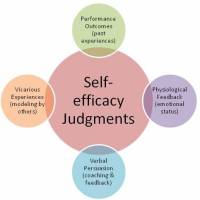In 2014 Andy Tharby and I started to think about a model of effective evidence informed teaching that we could share with our teachers here at Durrington. We wanted our teachers to be able to confidently articulate what the evidence suggests effective teaching might look like and then feel confident when implementing this in their classrooms. You can read about our early thoughts on this here. One thing led to another and these six principles eventually shaped our book ‘Making every lesson count’, which was published in June 2015.
These six principles have also been the focus of our teaching and learning policy here at Durrington for the past seven years or so. This has given our teachers a great degree of stability and autonomy, as we have resisted the temptation to jump from one new approach to another. Instead, we have stuck with these principles, with this simple message for teachers ‘implement these six principles really well in your classroom, in the way that best suits your subject and your style’. What we call a ‘tight but loose’ approach.
As our knowledge of the research evidence has developed over the years, so has our understanding of what the six principles should look like in the classroom. For example, we have always talked about the importance of modelling how to use the new knowledge students have learnt. As we now understand more about metacognition, we also make sure we are explicitly modelling our own metacognitive thinking as teachers. We have summarised how the areas of research evidence we have looked at over the past few years link to the six principles, in this diagram:

We talked about this at our INSET day last week. Now we are all (thankfully) back in our classrooms and teaching face to face, it’s important that we get back to the basics of teaching. The six principles provide a great opportunity to do this. Ben Crockett and James Crane shared some useful questions to support our planning and thinking about the six principles.
Challenge
- Are the learning intentions of the lesson or sequence of lessons, aspirational and how will I support all students to reach for these?
- What tier 2/3 vocabulary or disciplinary reading may students be exposed to – and how?
- How can I create desirable difficulties during the lesson e.g. testing, variation of practice strategies etc?
- Have I planned opportunities for students to be ‘thinking’ during the lesson (and not just focused on what they will be ‘doing’)?
Explanation
- How will I ensure that I have my students’ full attention when explaining a new idea?
- How am I going to tether new knowledge to what students already know?
- Am I combining visual and verbal information when explaining a new idea?
- Is my own knowledge secure enough to provide a clear explanation?
- What possible misconceptions/assumptions may students make as they assimilate new knowledge?
- How can I manage cognitive load when explaining e.g. chunking, reducing extraneous load etc.?
- How will I make abstract ideas, concrete?
Modelling
- Have I had the opportunity to practice how I model this new idea? Have I asked other teachers how they model this in their lessons?
- What is the language/vocabulary I wish students to use and how will I model this?
- What form of modelling will be most appropriate for this context – i.e. deconstruct, pre-prepared model or live model?
- What are the metacognitive processes (planning, monitoring and evaluation) that I will need to model to students and how will I do this?
Practice
- When will students get to practise the knowledge or skill taught? Is there sufficient time for this?
- Is the knowledge/skill we want students to practise clear to them and us as teachers?
- Have I planned for retrieval opportunities?
- Do you have worked examples to support students during their practice?
- What form is the practice going to take? How can this support effective feedback?
- What are the common errors I am going to look out for whilst students engage in practice?
Questioning
- What are the hinge questions I am going to ask?
- How do I ensure my questions elicit thinking for as many students as possible e.g. cold calling?
- What are the superficial responses I might expect to questions, and what follow on questions will I ask in response to stretch their thinking?
- Have I thought about the elaborative questions I am going to ask?
- What are the metacognitive questions I am going to ask?
- What is the crucial vocabulary in my questions and how will I ensure students understand this?
Feedback
- What tasks or activities will require teacher feedback and what will this look like?
- How will I gain information from the students and use this to inform the future tasks/activities/lessons?
- When will there be opportunities for individual and whole class feedback?
- How do I ensure the feedback is purposeful for the recipient?
- How will the students use the feedback to move learning forward?
Whilst this is by no means an exhasutive list, hopefully it provides teachers with some key pointers to be thinking about when planning lessons.
Have a great year!
Director of Education (DMAT)
Directof of Durrington Research School
Details of our 2021-22 training programmes can be found here.









